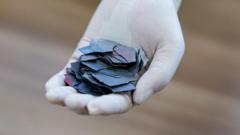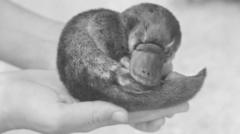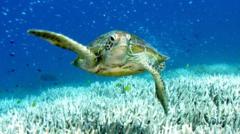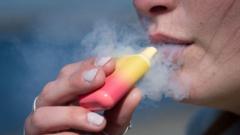The Australian Reptile Park plays a crucial role in milking venom from some of the continent's most dangerous animals, such as the Sydney funnel-web spider and King Brown snake. The venoms are used to produce antivenoms that save lives. Through public cooperation and specialized techniques, these creatures, while deadly, become instruments of life-saving medicine.
The Paradox of Australia's Creatures: Deadly Venom to Life-Saving Antivenom
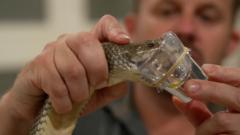
The Paradox of Australia's Creatures: Deadly Venom to Life-Saving Antivenom
In Australia, the very venomous spiders and snakes that can kill are also vital for developing life-saving antivenoms, showcasing a unique relationship between danger and health.
The poison paradox: How Australia's deadliest animals save lives
With a pair of bright pink tweezers in hand, Emma Teni carefully captures a large, leggy spider in a small plastic pot. She jokes that the spider is "posing" as it rears up, allowing her to extract venom from its fangs using a tiny pipette. Emma operates from a small office, commonly referred to as the spider milking room, where she milks around 80 Sydney funnel-web spiders daily for their venom.
On three of the room's walls, shelves are filled with these arachnids, while a black curtain is drawn across the remaining wall to keep them calm. An intrigued child watches from the other side of the glass, oblivious to the fact that this palm-sized spider could potentially be fatal. Emma notes, "Sydney funnel-webs are arguably the most lethal spider in the world." Australia is renowned for its deadly wildlife, and the antivenom program at the Australian Reptile Park plays an essential role in saving lives on a continent where the joke is often that "everything wants to kill you."
Historically, the quickest recorded death from a Sydney funnel-web spider bite occurred within 13 minutes, although the average survival time is closer to 76 minutes with prompt first aid. Since the antivenom program began in 1981, no fatalities due to these spiders have been reported. Public participation is crucial, as the program relies on Australians to catch and deliver spiders to the facility.
Emma and her team travel weekly across Sydney in a van adorned with a giant crocodile sticker to collect spiders dropped off by the public at various locations, including veterinary clinics. Handyman Charlie Simpson is one such individual who found two Sydney funnel-webs after moving into his new home. "I was wearing gloves but probably should have used leather gloves," he remarks, underscoring the dangers of the spiders. But with encouragement from friends about the importance of handing them over for milking, he humorously adds, "This is curing my fear of spiders."
Emma clarifies that her team does not advocate searching for these deadly creatures; rather, they seek public assistance when a spider is found, urging safety especially due to the dangerous nature of the insect. "That spider there," she asserts, referring to one collected from Charlie, "will effectively save somebody's life."
Back at the park, collected spiders are categorized by sex and stored for various purposes. Female spiders are considered for breeding to increase public donations while males, significantly more toxic, are prioritized for venom extraction every two weeks. During this process, Emma uses a pipette attached to a suction hose to gather venom, although a single spider only produces small amounts. Roughly 200 spiders must be milked to fill one vial of antivenom, highlighting the program's demand.
Emma did not originally anticipate this career path; she has a background in marine biology but has found a passion for arachnids. Now known by affectionate nicknames such as “spider girl,” her extensive knowledge of Australia’s dangerous species has made her a go-to resource for friends and family.
Beyond spiders, the Australian Reptile Park is also integral to supplying snake venom for antivenom production. According to the World Health Organization, approximately 140,000 people die globally from snake bites each year, but Australia’s numbers are significantly lower—averaging between one to four deaths annually—thanks to effective antivenom use.
Collecting venom from a King Brown snake, operations manager Billy Collett emphasizes that these reptiles are not eager to bite unless provoked. "They just want to be left alone," he explains, while demonstrating how to extract venom safely. The collected raw venom is stored and, after undergoing a meticulous freeze-drying process, is sent to CSL Seqirus for antivenom production, a procedure that can take up to 18 months.
In producing antivenom, controlled doses of venom are injected into larger animals like horses, fostering the development of antibodies, while smaller creatures like rabbits are used for spider venom. CSL Seqirus manufactures about 7,000 vials of antivenom annually, which includes treatments for various Australian reptiles and venomous marine life. These vials are distributed to rural communities and emergency services, ensuring that those in high-risk areas, like Papua New Guinea, also receive help.
Ultimately, the Australian Reptile Park and its team reveal that the very creatures that provoke fear offer vital benefits to health and safety, turning deadly encounters into an opportunity for rescue and recovery.




